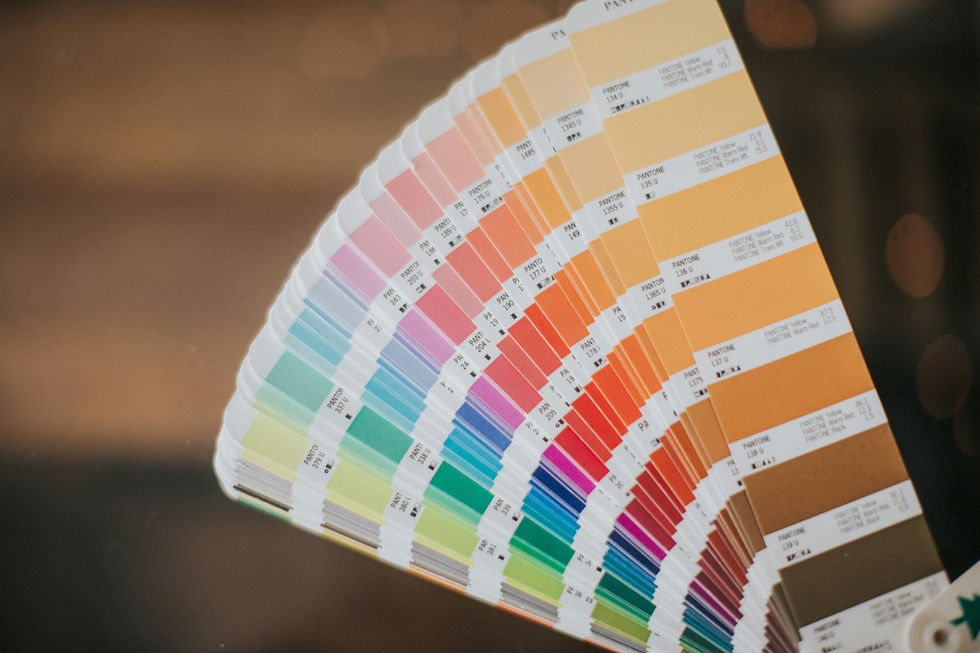What's in your toolbox? Navigating the Maze of Design System Documentation with Ease
- Thomas Renon

- Jan 20
- 4 min read
Updated: Jan 24
In the fast-paced world of digital product design, a well-organized design system is not just a good idea; it's a necessity. Imagine rummaging through a cluttered drawer, trying to find a specific tool among a jumble of mismatched items. It can be frustrating! Fortunately, there are plenty of tools that can make managing and documenting your design system much simpler.
This guide will walk you through various tools that can help streamline your design system management. Whether you're a beginner or a pro, you will find valuable insights here.
Understanding design systems
Before we explore the tools, let's define what a design system is. A design system consists of reusable components guided by clear standards. It acts as a single source of truth for designers and developers, ensuring consistency and efficiency across all projects.
A well-documented design system can enhance collaboration by up to 30%, reduce duplication of efforts, and accelerate the overall design process. Now that we know what we're talking about, let’s look at some tools that can help create and maintain a strong design system.
Documentation tools: Creating your playbook
Effective documentation is essential for any successful design system. Without it, even the best design components can become confusing. Here are some effective tools for creating your documentation:
1. Storybook
Storybook is an open-source tool that helps you develop UI components in isolation. This is particularly useful for creating visual documentation. You can explore different states and variations of each component, so everyone understands how to use them.
Its add-ons can enhance functionality significantly. For instance, you can test components in various scenarios, helping designers and developers collaborate more easily and increase productivity by about 25%.
2. ZeroHeight
ZeroHeight focuses on easy-to-understand design documentation. You can input your specifications and guidelines directly, transforming raw text into attractive, clear documentation.
With collaborative features, your team can continuously update the document as the design system evolves. ZeroHeight integrates well with popular design tools like Figma and Sketch, keeping your design assets consistent across the board.
3. Notion
Notion serves as an all-in-one workspace, perfect for managing design systems. You can create a flexible documentation hub to write, edit, and collaborate on design guidelines.
Its visual capabilities set it apart; Notion allows you to incorporate images, videos, and various content blocks. This is ideal for teams that value visual presentation, enabling them to brainstorm and document ideas as they evolve.
Version control: Keeping track of changes
Tracking changes in your design system is vital. Here are two powerful tools for version control:
4. Git
While Git is primarily used in coding, it can also be a tremendous asset for design teams. It allows you to manage versions of design files effortlessly.
For example, by using GitHub to host your design files, you can facilitate teamwork, allowing seamless contributions. This way, you maintain design integrity while fostering creativity and innovation.
5. Figma
Figma has become one of the most popular design tools lately. Not only does it enable collaborative design, but it also offers excellent version control functionalities.
Its branching feature allows designers to explore alternate design paths without affecting the main file. Figma provides easy access to design histories, simplifying the process of tracking iterations and promoting better team communication.
Collaboration tools: Bridging the gap
Design projects often involve diverse stakeholders. Here are two popular collaboration tools that ensure everyone stays aligned with the design system:
6. Slack
Slack is a user-friendly messaging platform designed for seamless communication. You can create dedicated channels for specific design topics, making it simple for team members to share updates and feedback.
Integrations with tools like Figma and Notion make Slack an ideal hub for all design-related discussions. Everyone stays informed, making it easy to ask questions or communicate changes efficiently.
7. Miro
Miro is an online whiteboard tool that excels in collaborative efforts. Your team can diagram user flows, brainstorm ideas, and gather feedback in an interactive space.
Miro’s versatility benefits design teams in various ways, from affinity mapping to design sprints. It allows everyone to visually connect with the design system, ensuring all perspectives are considered.
Asset management: Keeping it all together
Properly managing design assets is crucial. Here are two convenient tools for organizing your assets effectively:
8. Google Drive
Google Drive is a widely-used cloud-storage solution perfect for document management. You can set clear naming conventions and organize folders to streamline asset management.
Its user-friendly sharing options facilitate collaboration. The ability to track status and provide feedback directly within documents keeps all communication organized in one place.
9. Abstract
Abstract offers a version control system specifically for design files. It enables designers to create, manage, and document changes collectively.
With branching and merging features, Abstract allows teams to experiment independently without disrupting the main design process. This organized view simplifies file management and collaboration dramatically.
Wrapping up your toolbox
Navigating the complexities of design system documentation doesn’t have to be overwhelming. By selecting the right tools for documentation, version control, collaboration, and asset management, any designer can build a robust design system that boosts productivity and creativity.
With the right resources, maintaining a design system can turn from a hassle into a rewarding part of the design journey.



Comments